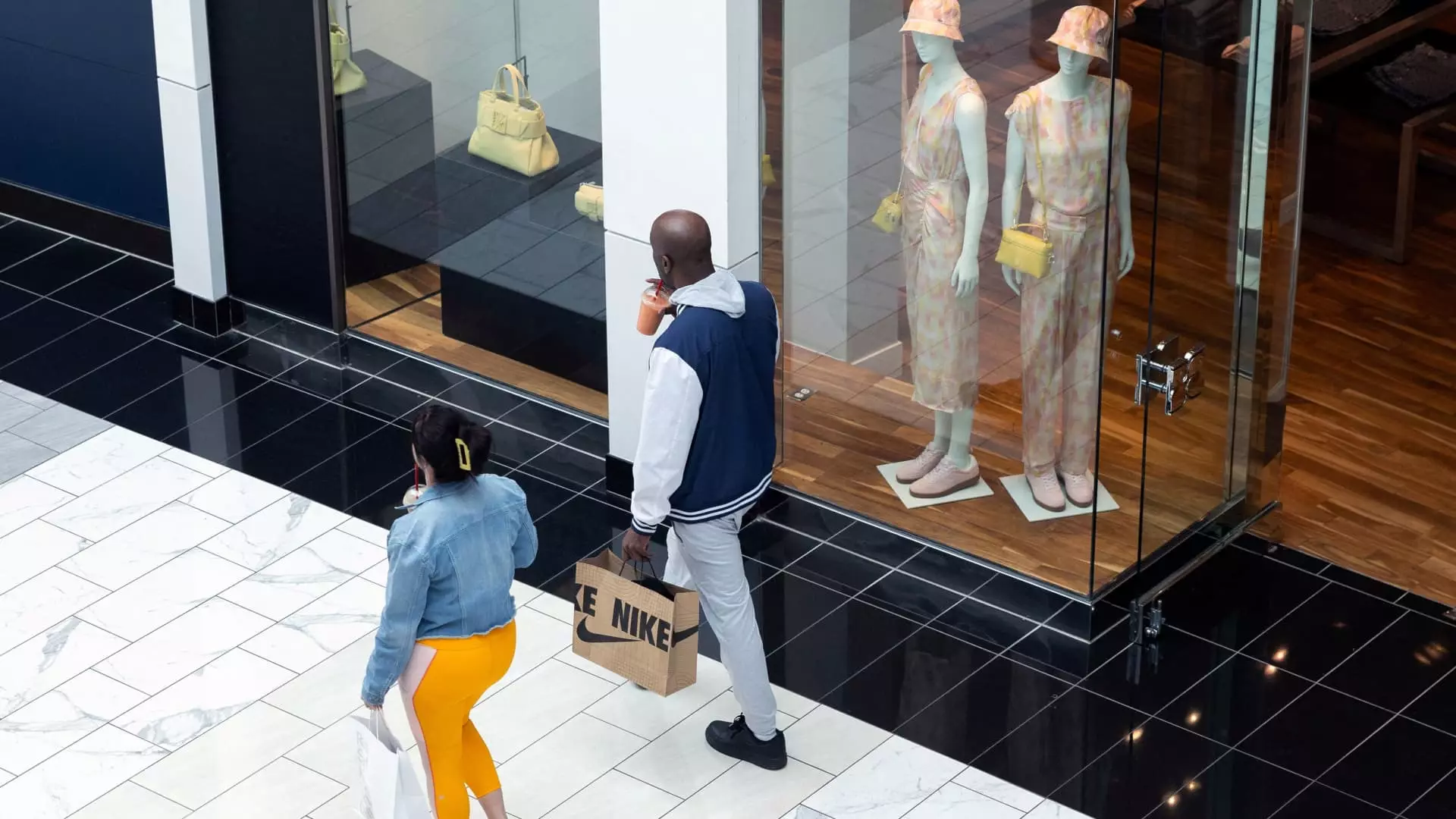In an era where financial anxiety is palpable, it is intriguing to observe how seamlessly Americans continue to spend. Recent surveys, revealing that 73% of adults in the U.S. feel financially strained, seem to contradict the ongoing consumer spending trends. Numerous factors, including trade tensions and uncertainties surrounding tariffs, contribute to this anxiety; yet insignificant adjustments in spending behaviors suggest a perplexing reality. Are consumers caught in a state of denial, clinging to their lifestyles despite ominous economic forecasts? Or is it merely a reflection of America’s cultural tendency to prioritize consumption over financial prudence?
Consumer spending, deemed the bedrock of the American economy, unexpectedly exhibited robustness in March and continued its ascent in April. The pivotal role of consumer confidence cannot be overstated; it drives economic growth and influences Gross Domestic Product (GDP). Financial institutions like J.P. Morgan now predict a 60% likelihood of recession by year’s end. In a market fraught with uncertainty, Americans are not only feeling stressed but also engaging in panic buying — often a symptom of economic paranoia. In this duality lies a profound economic irony: consumer confidence is faltering even as spending appears unaffected.
The Tariff Tidal Wave
Trade policies, especially those enacted under the current administration, have birthed widespread turmoil. Federal Reserve Chair Jerome Powell’s acknowledgment that consumer spending constitutes the primary driver of the economy brings to light the gravity of tariff implications; these policies are expected to exacerbate inflation while constraining growth. Essential goods are experiencing price spikes, and consumers are feeling the pinch of escalating costs. The underlying sentiment that arises from the tariff wars is one of dread, reflecting growing apprehension about future economic stability.
As tariffs linger ominously on the horizon, respiratory economists warn that consumer sentiment is diminishing at an alarming rate. The Conference Board’s expectations index has tanked, indicating that consumers’ short-term outlook has reached historic lows. With the University of Michigan’s consumer survey highlighting a notable 30% decline in sentiment since December, the weight of economic apprehension looms larger than ever. When recession becomes a self-fulfilling prophecy, consumers may pull their financial reins tighter, perpetuating the very cycle of decline they fear.
The Illusion of Normalcy
Despite mounting economic anxiety, behavioral economics suggests a powerful inertia that holds consumers back from making substantial changes to their spending habits. Even while recognizing the shifting economic environment, we cling to familiar patterns and entrenched habits. This proclivity for normalcy can often be detrimental; it encourages a false sense of security in our financial choices. The reality is that once financial limits are reached, the consequences could be dire, precipitating a gradual scaling back of expenditures and an inevitable economic downturn.
This behavior aligns with findings from experts who emphasize how the interconnectedness of spending shapes overall economic health. When one person’s expenditure serves as another’s income, minor adjustments can reverberate throughout the economy, amplifying impacts unusually. It is here that the significance of collective consumer behavior manifests: emotional responses drive spending decisions, but these very choices could lead to a broader economic crisis.
A Call for Caution
The tides of economic advantage do not last forever. Even if Americans are comfortable now, they must recognize that their financial circumstances could soon change. Behavioral biases encourage complacency in spending, yet the looming risk of hyper-inflation and dwindling household budgets necessitates a recalibration of priorities.
Concerns about inflation and the potential for an economic slowdown are valid and pertinent. As financial analyst Greg McBride identifies, consumer sentiment is increasingly linked to economic conditions and eventual spending capabilities. With during economic upheaval, consumers need to be cognizant of the economic implications of their choices.
Ultimately, the pressure of escalating prices alongside the uncertainty of tariffs signals a need for a radical reassessment of our economic behaviors. While panic buying and current spending trends paint a picture of resilience, they also obscure the potential risks. Consumer confidence may be a fragile construct, readily susceptible to disruption. The time to act is now: recognize the signs of economic strain, embrace changes in spending behavior before forced to do so, and safeguard against the unexpected financial shock that looms just beyond the horizon.

